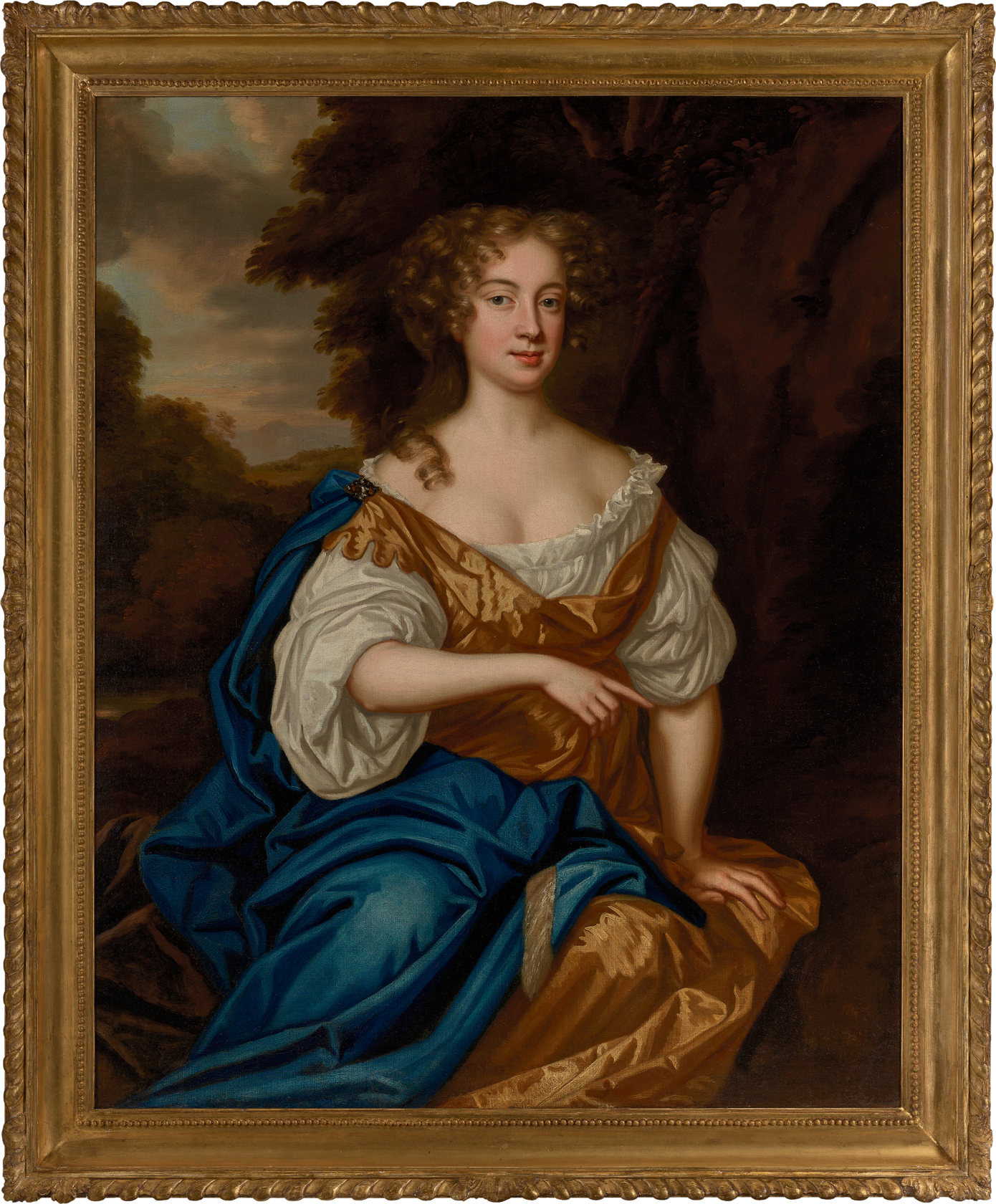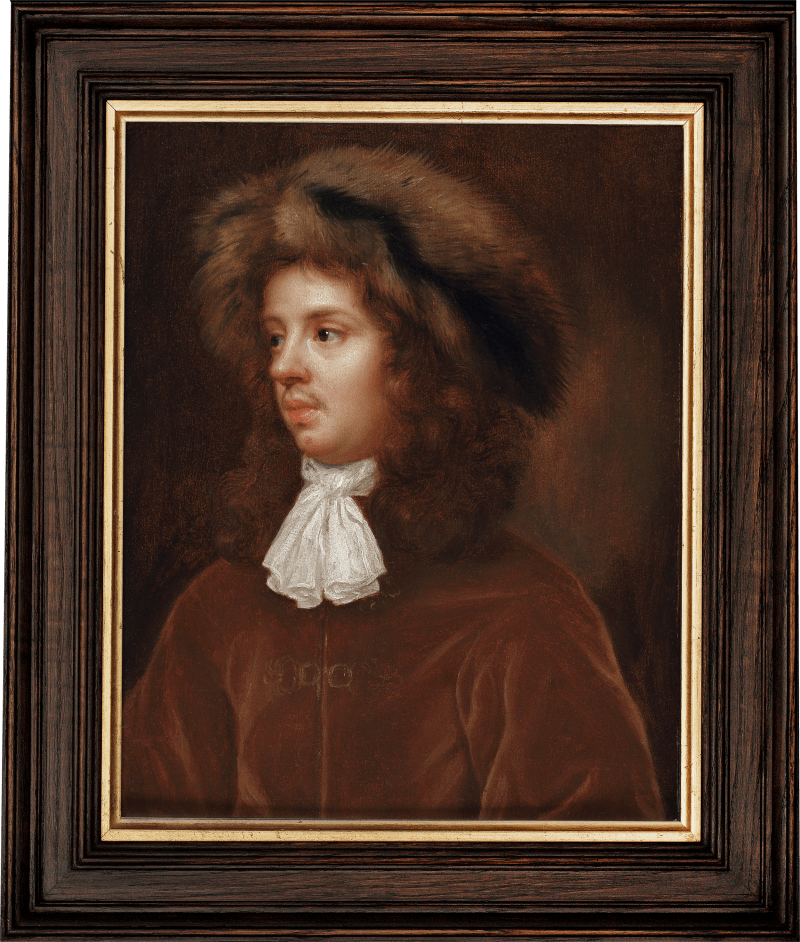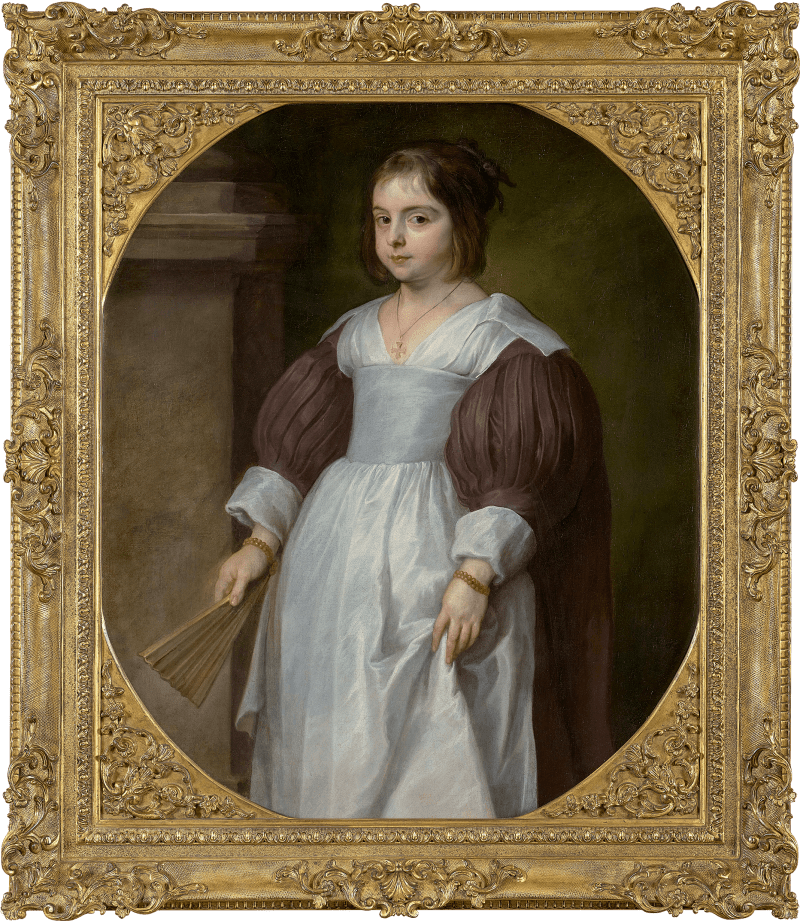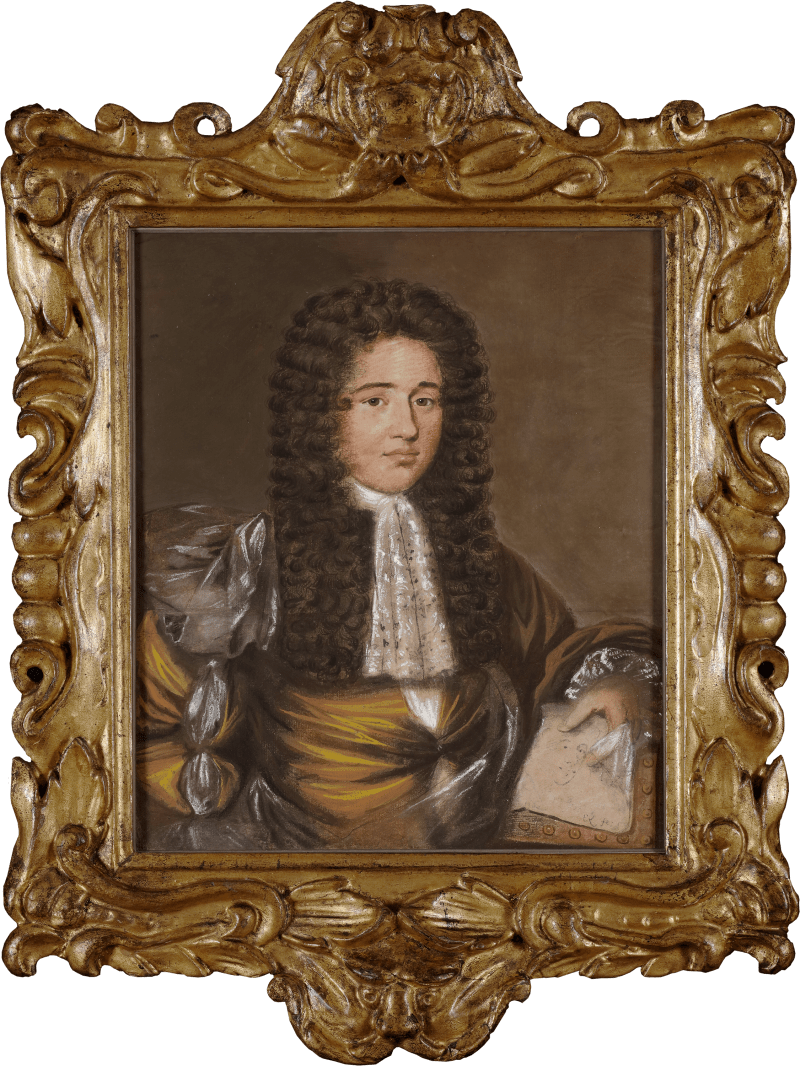This striking portrait of Anne Sotheby is a rare recorded example of a work painted by Mary in collaboration with her son Charles, who worked in her studio.
Anne Sotheby (née Robinson) was the scion of an old English family whose lineage can be traced back to the early Tudor period. She was the daughter of William Robinson (d. 1667) of Bishop’s Hall, Bethnal Green, and the granddaughter of the London merchant Sir Nicholas Crisp (1598–1666). The Sotheby family owned several properties in East London, their main residence being in Hatton Garden, where the Beale family also owned property, which is possibly how they were introduced.
The present work was painted in 1676, when Anne was nineteen years old, two years after her marriage to James Sotheby II (1655-1720) and the year of the birth of their daughter, Anne (1676–1750). She is shown seated in an idyllic landscape, wearing a shimmering silk dress of the style popularized by...
This striking portrait of Anne Sotheby is a rare recorded example of a work painted by Mary in collaboration with her son Charles, who worked in her studio.
Anne Sotheby (née Robinson) was the scion of an old English family whose lineage can be traced back to the early Tudor period. She was the daughter of William Robinson (d. 1667) of Bishop’s Hall, Bethnal Green, and the granddaughter of the London merchant Sir Nicholas Crisp (1598–1666). The Sotheby family owned several properties in East London, their main residence being in Hatton Garden, where the Beale family also owned property, which is possibly how they were introduced.
The present work was painted in 1676, when Anne was nineteen years old, two years after her marriage to James Sotheby II (1655-1720) and the year of the birth of their daughter, Anne (1676–1750). She is shown seated in an idyllic landscape, wearing a shimmering silk dress of the style popularized by Beale’s friend and fellow portrait painter Sir Peter Lely in his lyrical portraits of court beauties. The composition derives from the latter’s portrait of Elizabeth Stanley (née Butler), Countess of Derby (1660–1717), which was in Beale’s studio in January 1676/77. In his diary for 1676/77 on 20th January Charles Beale recorded: ‘The Countess of Darby sent my Dearest Heart her picture done by Mr Lely in ye same posture with the Lady Essex Finches to make a Copy in Little.’[1] Given the close similarities between the two pictures, we can be almost certain that Beale painted the present portrait whilst referring directly to Lely’s composition.
Anne’s husband James was a successful lawyer and art collector who is known to have commissioned works from various prominent artists of the period, including John Riley (1646–1691), who painted his portrait around 1690.[2] The present portrait is mentioned in a notebook compiled by Anne’s son, which was in turn copied from an earlier notebook penned by her husband. This includes details concerning property and rent, but also the acquisition of pictures and other works of art. The painting is recorded there as ‘By Mrs Beal, The Picture of my Wife in her 20th year, a half-length. £14.50’.[3] In the 1670s, Beale charged £5 for a head and shoulders (or ‘three quarter’) portrait and £10 for a half-length, although the overall price recorded in the Sotheby notebook probably included the cost of the frame and an additional charge of £1 for the use of the expensive ultramarine pigment in the blue drape.[4]
The portrait of Anne Sotheby is also recorded in Charles Beale’s 1677 notebook. It indicates that this year was particularly productive for Mary, who obtained ninety commissions and earned the considerable sum of £416.04. By comparison, Lely earned an annual ‘pension’ of £200 as King Charles II’s court painter.[5] To meet the demand for her portraits, Mary employed studio assistants. Her primary and best-documented helpers were her two sons, Bartholomew and Charles, who were trained to assist with the painting of basic elements such as draperies and tromp-l’oeil stone cartouches.[6] Towards the end of the 1677 notebook, Charles lists all the recent payments made to their sons for laying in the drapery of their mother’s portraits, and under the list of payments to Charles the younger is recorded: ‘Pd. him for Mrs Southerby’s H.L. £1.00.’[7]
Although it was standard practice at this date to employ studio assistants (Lely maintained a large studio that produced copies of his works on demand), it is rare to be able to confirm their involvement in specific works. Given Charles’s diligent record-keeping, however, we can sometimes identify works on which the Beale sons collaborated, allowing us to distinguish the different hands active in Beale’s workshop. Aside from the present work, for example, we know that Bartholomew was paid for assisting with the draperies in the portraits of William Trumbull (1636-1716) and Elizabeth Trumbull (née Cotterell) (1652-1704).
[1] Beale, ‘Notebook 1676/7’.
[2] John Riley, Portrait of James Sotheby, c. 1690, Tate Gallery, T00057.
[3] NAL, ‘Notebooks’, MSL/1955/2715-2730.
[4] For further information on Beale’s pricing see Draper 2020, p.208.
[5] Ibid., Appendix 1, pp.214 and 383.
[6] Reeve 1994, p.6.
[7] Beale, ‘Notebook 1676/7’.













